More information available in Spanish here.

Search
Posts de la categoría ‘Events’
2018 UNGA | MPPN Side Event: Using the MPI to guide innovative policies to eradicate poverty in all its dimensions
The event followed the 20 September 2018 joint release by OPHI and the UNDP Human Development Reports Office of the updated global Multidimensional Poverty Index (MPI) data for 2018. The 2018 global MPI includes adjustments to indicators so that the global MPI better aligns with the SDGs.
Highlights from the discussion included:
 H.E. Juan Carlos Varela, President of Panama
H.E. Juan Carlos Varela, President of Panama
My government adopted the Multidimensional Poverty Index as a decisive step to change the paradigm of development in our country placing the human being in the center, giving name and face to the figures and statistics. The MPI allowed us to capture those dimensions of human poverty that constitute an obstacle to development, serving as a fundamental tool for the development of policies and the allocation of resources with social criteria.
For this reason in 2017 we were the first country in Latin America and the Caribbean to develop the first MPI for children and adolescents in the region. Experience that today we make available to all the countries that make up the Multidimensional Poverty Network as a step towards the correct direction towards the fulfillment of the first Sustainable Development Goal (SDG). This new instrument makes it possible to capture the hardships suffered by children and adolescents and understanding that they are different from those suffered by adults, have much deeper and permanent effects, so as to guide and monitor the policies of each State that guarantee development.
 H.E. Juan Orlando Hernández, President of Honduras
H.E. Juan Orlando Hernández, President of Honduras
As a government we were always convinced that poverty should not be measured only by income but in a multidimensional way and I particularly want to share with you that having been born in the rural sector of my country and grown up and lived in cities, I understood better why we should not measure only the issue of income. In the rural sector you can live with less money and live more comfortably, I tell you from experience.
In the measurement of Multidimensional Poverty we have had the following benefits: 1. Follow up and evaluate the program Vida Mejor as a multidimensional platform to serve the most needy and that allows us to make adjustments to achieve more efficiency and effectiveness. 2. Substantially improve inter-institutional and intersectoral coordination with comprehensive intentions. 3. Targeting poverty at the territorial level, attention to ethnic groups and vulnerable groups. 4. The identification of a specific group, for example, attention to early childhood, preschool education, attention to coverage of education from seventh to ninth grade.
 *H.E. Epsy Campbell Barr, Vice-President of Costa Rica
*H.E. Epsy Campbell Barr, Vice-President of Costa Rica
I would like to emphasize what it means to have this perspective of multidimensional poverty and of its counterpart multidimensional development and put it in the context of the 2030 Agenda for Sustainable Development. Costa Rica has understood that it assumes a more comprehensive perspective, a transformative perspective, a perspective that look at the lives of people in all their dimensions, their own well-being and that really is a qualitative contribution.
We came from a time when the approach to poverty issues was limited not only to income but also was not framed in a general umbrella of development. Not leaving anyone behind is a responsibility but it is a responsibility in perspective in which we clearly have the development standards where we believe that people should be, where citizen action should be based and where we should place the different actors of the society to generate the commitments related to the development of the sectors that have been most violated. The implementation of this methodology allowed Costa Rica to reduce Multidimensional Poverty from 20% to 18%, 20 thousand families managed to get out of poverty precisely because we had the possibility of doing a much more comprehensive approach. We believe that this perspective of poverty and multidimensional development is a more complete perspective that allows us to analyze in a better way the situation of vulnerability that some family members encounter, but it is also the path that we must take to achieve the Sustainable Development Goals.
Our experience in implementing the Multidimensional Poverty Index has not only improved and transformed public policy in our country, but has allowed our actions to have an impact on the daily lives of thousands of people. Many of those people are women who they found themselves in a situation of absolute exclusion.
 Luis Felipe López-Calva, UNDP Regional Director for Latin America and the Caribbean
Luis Felipe López-Calva, UNDP Regional Director for Latin America and the Caribbean
“We jointly with OPHI presented global numbers for MPI that showed three main messages: there are 1.3 billion MPI poor people in 104 countries for which data were available, half of them are children, and this represents about 25% of the total population in these 104 countries.”
“…the MPI process has led, at the national level, to a process in which there are many actors who are convening to discuss what it means to be poor in that context, so they discuss what are the dimensions, what are the thresholds, and what are the challenges to define poverty in that specific context. The process itself has a lot of value. …it has become also an instrument for policy coordination… it has also allowed us to identify better information gaps and to improve national information systems. And finally, it has also become an instrument of accountability.”
 H.E. Rosemarie G. Edillon, Deputy Director General, National Economic and Development Authority, Philippines
H.E. Rosemarie G. Edillon, Deputy Director General, National Economic and Development Authority, Philippines
“Back in 2015, our agency, the National Economic and Development Authority sought to determine the aspirations of Filipinos over the long term, a span of 25 years. We conducted a nationwide survey where we asked respondents, numbering 10,000 what they want to be, to do and to have by 2040. We have summarized the results into three broad aspirations: to enjoy strongly-bonded relationships, to live a comfortable lifestyle and to feel secure about the future. Clearly, increasing income is but one of the many factors that figure into the aspirations of Filipinos.”
“The multidimensional poverty index (MPI) presents itself as an alternative measure of poverty. Actually, I would say that it is more relevant in depicting poverty as it is closer to the concept of a comfortable lifestyle; if you are multidimensionally poor, then you are not enjoying a comfortable lifestyle. It is also ideal for identifying the poorest of the poor, as it depicts multiple deprivations. It also provides an objective method for identifying beneficiaries of targetted assistance programs. In addition, it makes for easier and less expensive data collection.”
 H.E. Shamsul Alam, Member (Senior Secretary), National Planning Commission, Bangladesh
H.E. Shamsul Alam, Member (Senior Secretary), National Planning Commission, Bangladesh
“The government of Bangladesh recognizes the importance of the multidimensional nature of poverty”.
“We should try to include indicators that are not only relevant to the country context but also comparable to the global perspective.”
 H.E. Nabeela Tunis, Minister of Planning and Economic Development, Sierra Leone
H.E. Nabeela Tunis, Minister of Planning and Economic Development, Sierra Leone
…the many faces of poverty cannot be captured by income measures alone. Knowing not just who is poor but how they are poor is essential for effective human development programs and policy decisions.
This straightforward yet rigorous index allows us in government to understand the various sources of poverty at the national as well as the subnational levels for our various population groups and as such be able to target the human development plans accordingly. We have derived our national development priorities for the next couple of years from the MPI analyses. It has given us a direction of where we want to go and how we want to get there.
H.E. Carlos Velasquez Monge, Minister of Social Development, Guatemala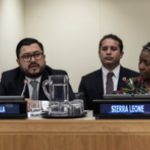
We are taking a giant step forward by joining the Multidimensional Poverty Network and creating our own multidimensional poverty index. The development of our Multidimensional Poverty Index will help ensure that budgeted resources are properly targeted for our social programs.
Guatemala will launch its Multidimensional Poverty Index next December and we are sure that with this will change the concept of poverty at the national level, but we are also confident that we will be able, through this index, to be effective in the methodology of our social programs.
 H.E. Risenga Maluleke. Statistician General South Africa
H.E. Risenga Maluleke. Statistician General South Africa
The reason South Africa is in favour of using the SAMPI, is because the SAMPI looks at deprivation in multiple aspects of life such as education, health, asset ownership, economic activity and others. And of course put all identified aspects together in an index to measure poverty, it helps to evaluate the effectiveness of poverty reduction strategy implemented since the dawn of our democracy.
SAMPI indicates that the contribution of government social wage program towards poverty reduction, the contribution of government poverty reduction programs such as fee-free schools, free primary healthcare, access to free basic services, provision of free formal housing, and others, are captured in the SAMPI. However, many of these services are difficult to quantify in monetary terms, especially at household level.
There’s a great effort made by StatsSA to ensure that SAMPI is used in policy making. We are in the process of discussing with relevant stakeholders to make the SAMPI the official permanent poverty measure.
H.E. Oliver Arroyo, General Director for Evaluation and Monitoring of Social Programs, Mexico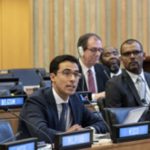
A further example of the application of the MPI as a guiding criterion of public policy is the construction of the Poverty Observatory. This interactive online public platform, which seeks to show the assessment of poverty and its dimensions among other development indicators, will allow SEDESOL to address three aspects: 1. Indicate the evolution of poverty at the national, state and municipal levels. 2. Analyze poverty and its targeting so that states and municipalities can more effectively address structural poverty at the local level. 3. A repository of good practices in the fight against poverty derived from the experiences of other states and municipalities.
H.E. Ghada Waly, Minister of Social Solidarity, Egypt
Egypt has been going through fundamental changes where the are serious concerted efforts to achieve the SDGs and to develop a comprehensive social safety net addressing multidimensional poverty and aiming at increasing choices and opportunities.
Economic reforms aiming at addressing structural challenges have taken place coupled with a large social safety protection program that has been built around the indicators we use and see in the multidimensional poverty index.
Mohamed Ali Alhakim, Executive Secretary, UN-ESCWA
At the regional level, ESCWA will continue to lead the work on monitoring Multidimensional Poverty to inform policy makers and to serve as inputs to the SDG 1. We are collaborating closely with OPHI, and with League of Arab States, and UN Agencies – UNDP is one of them – in this direction, and we will not spare any effort to improve our measurement techniques building on the Arab MPI.
As Arab countries are increasingly adopting multidimensional poverty measures, ESCWA is to support the bridge and bridge the gap between the measurement and policy.
Jorge Familiar, Vice-President of the World Bank for Latin America and the Caribbean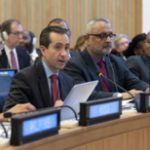
The MPI is transparent, it is a measure that can be easily understood by the population, and it’s a measure that serves as a tool for monitoring progress across a range of government actors.
All these new measures introduce new elements that will help us piece together the poverty puzzle, and help countries to prioritize their investments so they can provide better opportunities for all.
Laurence Chandy, Director of Data, Research and Policy, UNICEF
We’ve learned something really significant about the role of national multidimensional poverty measures when they are combined with age disaggregation to draw attention to the composition of poor households, and thus the condition of children–and the further benefits that then arise when child-specific multidimensional poverty measures are developed.
Saurabh Sinha, Chief of Social Protection and Employment Section, UN-ECA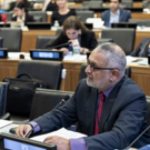
For the last few decades, if you see the growth of our understanding of poverty, it has really meant that we have understood poverty to be more than just a question of numbers of people below a certain consumption line. And so, as a result of our development of understanding of poverty, there is a need for measuring poverty in all its dimensions. To that extent, the Multidimensional Poverty Index plays a very important role.
In particular, in Africa, when we work with member states, we realize that the MPI provides and enlarges policy options, especially for some kind of fiscal decentralization. Because at the end of the day, what does the MPI do? The MPI is really providing us a more nuanced version of poverty. It provides a clear indication of what the drivers of poverty are.
ECA remains committed to working with member states in extending our understanding of poverty, extending our understanding of the dimensions of poverty, and what needs to be done to reduce poverty in all its dimensions in Africa.
Daniel Titelman, Director of Division of Economic Development, UN-ECLAC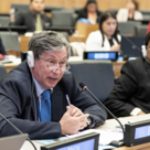
The MPI allows a better link between poverty analysis and social rights approaches on the one hand, and also it improves our capacity to evaluate public policies beyond income policies. So we think that this type of effort in terms of increasing not only the measurement, but also the understanding of the dynamics of poverty, is very important–[as] having a better understanding and better measurement of poverty will permit us to improve our policy capacity to fight poverty.
We are very happy that many countries in the region are moving in this direction, and we hope that we will keep moving with more countries and deepening the efforts in the countries that have already started this analysis.
Victor Harison, Commissioner for Economic Affairs, African Union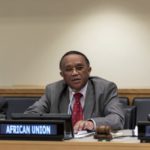
Although income poverty provides very useful information, it does not capture the multiple aspects that contribute to poverty, such as access to education, living standard, health, other non-income deprivations, and it does not really show how poor people are poor. The MPI goes beyond a traditional focus on income to reflect multiple deprivations to measure people who cannot reach the minimum internationally agreed indicators of basic functioning, such as education, health, and living standards.
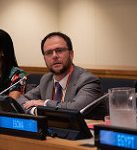 Gabriel Ferrero, Director of Sustainable Development Policies, Ministry of Foreign Affairs, Spain
Gabriel Ferrero, Director of Sustainable Development Policies, Ministry of Foreign Affairs, Spain
The experience of all the continents and especially in the Latin American community has shown that the multidimensional poverty index has been the best possible indicator for the evaluation of the first SDG, to guide public policies and to make reality the principle of not leaving to no one behind.
Since the 2030 agenda is universal and the use of the multidimensional poverty index is also transformative and useful for the OECD countries and for my country in particular where also the forms of poverty and social exclusion are a reality in many ways, Spain has considered the multidimensional poverty index in its voluntary national review that we carried out in July of this year in the high level political forum and we have included in our action plan for the implementation of the 2030 domestic agenda .
2018 UNSC | Side Event at UN Statistical Commission shows how MPI can break silos of poverty
The side event was chaired by Pali Lehohla, former Statistician-General of Statistics South Africa and Steering Committee member of the MPPN. Speakers included Directors of Statistics from Nepal, Philippines, Ecuador, South Africa, Tanzania, Mongolia, Uganda and Tunisia, with representatives also from Colombia, Rwanda and Egypt, as well as UNDP´s Human Development Report Office, UN´s Economic Commission for Latin America and the Caribbean, UN´s Economic and Social Commission for Western Asia and OPHI.
The event’s presentations will be added soon.
Highlights of each speaker’s points include:
Pali Lehohla, former Statistician-General, South Africa and Steering Committee, MPPN
- “We have a real treat tonight – a burst of information on how multidimensional poverty measures are being designed, disaggregated, and used in action to break the silos of poverty. For those of you who are here for the first time, you will leave here with a briefing on methodology and a map of exciting innovations in many countries.”
- “Multidimensional poverty is proving to give voice because it says ‘this is who we are, this is where we are, and this is how we are.’ So it gives voice to the poor and leaves no one behind.”
- “From observation, to monitoring, to planning, this is the challenge, I think, that we have to look at: What is the arsenal of tools that we can apply through multidimensional poverty into the planning processes?”
James Foster, Research Associate, OPHI and Oliver T Carr Professor, George Washington University
- “Why MPI has a very straight answer: poverty itself contains multiple forms with many dimensions. Who says that? UN member countries say this via the SDG process.”
- “It’s not just how many people are deprived, but also what they are deprived in. The different dimensions have to be examined in conjunction.”
- “MPIs provide a headline measure, disaggregations, interlinkages, to inform policy action, to complement monetary measures, to help leave no one behind.”
Full presentation is available here.
Suman Raj Aryal, Director General, Central Bureau of Statistics, Nepal
- “I think Nepal is one of the youngest countries to prepare an official National Multidimensional Poverty Index. We released our first figures a few months ago.”
- “There are fundamentally five motivations for Nepal to make a multidimensional poverty index: the first is to view the poverty through the different dimensions; the second is to assess the short-term effect of public interventions; the third is to understand the remittance effect; the fourth is to get an idea of the inter-sectoral linkages; the last one is, of course, to align with the SDG framework.”
- “Nepal decided to use the Global MPI as our National MPI with minor adjustments – that way we can compare with others, and also look within our seven new provinces”
Lisa Grace Bersales, National Statistician, Philippine Statistics Authority, Philippines
- “Poverty statistics are the most controversial official statistic we produce, so we really seek the guidance of this inter-agency committee, who are statisticians and economists.”
- “In the Philippines, poverty is a contentious issue, so we had to get the inputs from various groups, especially our national anti-poverty commission and also civil society, which had very strong ideas about which dimensions should be covered.”
Reinaldo Cervantes, Executive Director, National Institute of Statistics, Ecuador
- “In Ecuador, we are considering a new measure of poverty corresponding to our constitution…. our constitution mentions that the rights of people must be covered in multiple dimensions – education, health, employment, social security, habitat conditions, access to safe water, and others.”
- “Since the year 2017, we have two specific goals for multidimensional poverty reduction in our National Plan: first, reduce the multidimensional poverty rate from 35% to 27%; and second, reduce from 60% to 49% the multidimensional poverty rate in the rural areas.”
Risenga Maluleke, Statistician General, Statistics South Africa, South Africa
- “Between 2011 and 2016, poverty trends have diverged a lot more among municipalities.”
- “SAMPI helps to evaluate the effectiveness of poverty reduction, and, of course, it indicates the contributions of government social programs.”
- “We want to update the levels of disaggregation and use the SAMPI in policymaking.”
- “We are agreeing that we will come to meet in South Africa in October 2018 for the next MPPN Annual Meeting.”
Albina Chuwa, Director General, National Bureau of Statistics, Tanzania
- “We have been using the Global MPI in Tanzania for our national human development reports.”
- “Currently we are conducting our household budget survey, and now we want to establish our National MPI. We have engaged as many stakeholders as possible, including our development partners group.”
- “We are eager to join the group [of countries with National MPIs] and to see all these types of dimensions presented here.”
Ariunzaya Ayush, Chairperson, National Statistics Office, Mongolia
- “In Mongolia, we don’t have the official survey yet, but we have done a pilot survey.”
- “The outcome was quite high. When the income-based poverty measure was released in 2016, it was 29%, almost 30%. In the multidimensional poverty measure, the rate of deprivations for health was 42%, housing dimension was almost 60%, and standard of living was 40%.
- “Some of the selected indicators cannot express Mongolian conditions, maybe, and that could be the reason for the high MPI [relative to the income-based poverty measure]. Therefore, we understand that we need to organize more discussions with the related ministries and, of course, a multi-stakeholder group at the policy level.”
Full presentation is available here.
Ben Paul Mungyereza, Executive Director, Bureau of Statistics, Uganda
- “We have not started producing the MPI, but we have done the groundwork for producing the MPI. So far, we have created a Core Technical Team and a Community of Practice. The core technical team reports to the Ministry of Finance and it has members from the national statistics office, the planning authority, and the Economic Policy Research Centre. The core technical team is responsible for reviewing and computing the MPI, while the Community of Practice is mandated to engage the stakeholders and increase awareness among the stakeholders.”
- “The consultations we have had so far, the outcome is informing the dimensions and indicators that we need to address. And the areas that are clearly coming out that need to be addressed by the MPI: accountability, powerlessness, vulnerability, agriculture, housing, and education.”
Hedi Saidi, Director General, National Institute of Statistics, Tunisia
- “In Tunisia, we have developed, in coordination with OPHI and UNDP, a National MPI.”
- “Our MPI provides a strong tool to inform, monitor, and evaluate progress towards priorities that include employment, alongside living standards, health, and education. We incorporate these priorities into our Development Plan 2017-2020, and the MPI is designed to monitor it.”
- “The MPI tool will be used to monitor, evaluate, and adjust the National Plan and its related social economic programs by targeting the most important vulnerable populations in an efficient way.”
Full presentation is available here.
Carlos Felipe Prada, Deputy Director, Administrative Department of National Statistics (DANE) Colombia
- “The numbers of poverty in Colombia have been decreasing. We are working and thinking, because we have some indicators that are close to 100%… So, we are trying to have a new index in a couple of years.”
- “In Colombia we have an expert committee on poverty and multidimensional measurement that includes academics and some other government institutions and receives comments from civil society.”
- “We want to have the MPI disaggregated at the lowest municipality. With this census, with the national household surveys in Colombia, we can have the MPI measure for each municipality in Colombia and each village in the rural areas of Colombia. For us, it is a tremendous advantage and a tremendous improvement in our measurement because we want the MPI measure to have results for each department in Colombia.”
Full presentation is available here.
Ivan Murenzi, Deputy Director, National Institute of Statistics, Rwanda
- “Rwanda is a very small, developing country, but with great ambitions. And poverty is definitely one of the key, key issues that the leadership is committed to tackle.”
- “For our recent results, which we hope to release sometime in August or September, we will be disseminating results of monetary poverty as well as multidimensional poverty. So, one key issue I had in my mind is how do we package this together?”
- “In Rwanda, we usually have an annual leadership retreat, which brings together all government leaders. And it was amazing to see from some of the discussions we had through the Ministry of Finance, Ministry of Health, how this multidimensional assessment of poverty begins to bring everyone on board when we talk of poverty. Previously, in my view, monetary poverty has been more seen as an issue for the Ministries of Finance and Planning, but what multidimensional poverty is doing is bringing all the other stakeholders, from all corners, together.”
Heba Saied, Statistician, Central Agency for Public Mobilization and Statistics, Egypt
- “Poverty is not only monetary metrics, but there is a global trend to define poverty as the lack of access to services or deprivations in other aspects of life.”
- “Why do we use the HEICS [Household Expenditure and Income Survey] for our MPI? The HEICS provided non-monetary data about many indicators that are useful for multidimensional poverty measurement, as well as household expenditure and consumption. Also, the period of the survey is every two years, which allows for continuous monitoring of the conditions of the poor.”
Full presentation is available here.
Selim Jahan, Director, Human Development Report Office, UNDP
- “There is no need to emphasize once again that poverty is multidimensional. We all know that. But, at the same time we need a measure for that multidimensional poverty because often it is said that what we cannot count, is not counted.”
- “We started the journey on the Multidimensional Poverty Index, or MPI, back in 2010. When HDRO and OPHI started that journey through collaboration and worked over the years to publish and disseminate the results in the HDRs. Over the years, there have been some differences in methodologies, and there was the HDRO methodology and the OPHI methodology, but over the last year, Sabina and I and both our teams have discussed it over and over and found out that the differences were minimal and trivial, in some cases, if I may say so. Therefore, we have now decided to have one Global MPI methodology.”
- “As in the movie Casablanca, the last line was ‘Louie, this is the beginning of a longstanding friendship,’ and, with that I say that with OPHI and HDRO, this is also the beginning of a longstanding friendship, the results of which will be reflected in new generations of the HDRs.”
Pascual Gerstenfeld, Director, Statistics Division, UN-ECLAC
- “We are close to 60 persons, at this time, in New York, in a storm, talking about how to measure poverty.”
- “In 33 years, this [the MPPN] is the strongest network I have been involved in… When we began in 2013, there were fewer than 20 countries and five institutions, but now we are 53 countries and 15 institutions in less than five years. This is a real network. The word ‘Network’ is very strong and really, really important.”
- “We are working together now in four of the five regional commissions – ESCWA, ECA, ESCAP, and ECLAC – on a study of availability, comparability, and quality of indicators for monitoring goals 1.2 and 1.4.”
Marwan Khawaja, Chief, Demographic & Social Statistics, UN-ESCWA
- “The Arab Multidimensional Poverty Report was released a few months ago, at the end of 2017… The main goal was to develop an MPI tailored to middle-income countries, which a majority of Arab countries are.”
- “We wanted this MPI to serve as a foundation for developing a poverty reduction strategy.”
- “The report was produced with the League of Arab States, and that implies that the member states of the League had to endorse the report.
Sabina Alkire, Director, OPHI
- “Many countries have launched their MPIs as an official permanent statistic of poverty that goes along with the monetary poverty measure. That has to go through a number of internal processes, so it becomes an official statistic – and one that is used by policy at the highest level to drive action and reduce disadvantages effectively.”
- “Besides statistical reports, Voluntary National Reviews and the High Level Political Forum are places countries are sharing how the MPI can be used for policy.”
- “Many countries are wanting to report their MPI for SDG indicator 1.2.2.”
- “The MPPN [Multidimensional Poverty Peer Network] is a South-South network that was launched in Oxford by Amartya Sen, Nobel Laureate in Economics, and President Santos of Colombia, that tries to have both statisticians and policymakers share their experiences in developing an MPI. You are all welcome to join and share your insights with us on how best to fight poverty in all its dimensions.”
Full presentation is available here.
Photo gallery:
Click on the image to enlarge
5th MPPN Annual Meeting in Beijing, China 2017
In this warm and very interactive Meeting, members shared their experiences developing, implementing, and utilizing multidimensional poverty measures to help reduce the many overlapping deprivations experienced by the poor. This year, particular emphasis was given to how MPIs were being used to prioritize and track progress in countries’ SDG agendas and how they were working as part of coordinated planning processes.
At the opening on 9 October, participants attended China’s prestigious Global Poverty Reduction and Development Forum. The Vice Premier of China spoke, as did other Chinese and foreign leaders, including MPPN’s own Steering Committee leader Gonzalo Hernandez Licona (Mexico). In the afternoon, participants had an intensive briefing on China’s Precise Poverty Targeting Intervention, in which, in 2014, 70 million Chinese were identified as poor using China’s multidimensional framework that covers monetary, health, education, housing and livelihood deprivations. The realistic and highly visible political target is to eradicate such poverty by 2020. Wang Pingping from the National Bureau of Statistics of China gave a keynote lecture tracing progress using monetary and multidimensional poverty measures. IPRCC and OPHI presented based on documents and fieldwork in two provinces. Nicholas Rosellini, the UN Resident Coordinator and the UNDP representative in China, gave a second keynote linking China’s poverty reduction activities to the SDGs.
On 10 October, the formal opening session included an address by Dr Tan of IPRCC, MPPN Steering Committee and FAO. Sabina Alkire provided an overview of the MPPN’s activities since the last Annual Meeting, including the magazine Dimensions and the new policy briefing series. The first in-depth session looked at the challenges and opportunities involved in designing a National MPI in Chile, Pakistan, Mexico, and Colombia. Gonzalo Hernandez Licona of CONEVAL in Mexico gave a keynote explaining how Mexico’s national measure was developed and used for policy purposes. OPHI’s Adriana Conconi presented the draft handbook on creating National MPIs for feedback from member countries. Representatives from Malaysia, Uganda, Tanzania, and the Seychelles shared their ongoing work building MPIs. Next, Mexico, Panama, Colombia, and Costa Rica discussed how they were using MPIs to facilitate policy coordination and budget allocation. Finally, Felipe Roa-Clavijo presented the current MPPN communications materials, particularly Dimensions magazine and the new policy briefing series, engaging with participants about ideas for future issues. Presentations are available here.
The last day began with international agencies presenting on child poverty, conceptualizations of multidimensional poverty, Africa’s movement out of poverty, and regional MPIs. Participants then enjoyed an interlude session with videos and brochures showing how countries are communicating their MPI to policymakers, the media, and the public. IPRCC also shared their online platform for South-South knowledge sharing. Pali Lehohla, Statistician General of Statistics South Africa, gave a rousing keynote on the need to tilt MPI towards planning and the SDGs. In closing, Minister Dlamini of South Africa shared South Africa’s policy initiatives and reiterated their plans to host the 2018 meeting and her hopes for the Network in the future. The meeting concluded by finalising the communiqué and plans for the MPPN for the coming year and sharing commitments for action during the coming year.
The representatives approved the three-point communiqué, which:
- Calls for channels of SDG reporting for National and Global MP
- Endorses MPIs as a tool to meet poverty-related SDGs
- Promotes the use of research to innovate in response to demand
Important information:
- Communiqué
- Presentations
- Pictures MPPN 2017
- Agenda
- Concept Note
- Fourth MPPN Annual Meeting in Acapulco, Mexico. 2016
- Third MPPN Annual Meeting in Cartagena, Colombia. 2015
- Second MPPN Annual Meeting in Berlin, Germany. 2014
- Launch and First MPPN Annual Meeting in Oxford, United Kingdom. 2013
- What is the MPPN?
- MPPN website
Presentations from the MPPN Meeting 2017
Opening Remarks
– Dr Tan Weiping, Deputy Director General, IPRCC
– Piero Conforti, Senior Statistician, FAO
– Gonzalo Hernandez Licona, Executive Secretary, CONEVAL, Mexico
– Nicholas Rosellini, UN Resident Coordinator and the UNDP representative in China
Introduction
Keynote Speakers
– Wang Pingping, National Bureau of Statistics
– Gonzalo Hernandez Licona, Executive Secretary, CONEVAL, Mexico
– Pali Lehohla, Statistician General, Statistics South Africa
In Depth I: Designing an MPI: a Technical, Political, Communications Exercise
– President Ernesto Peña Nieto, Mexico (by video)
– Heidi Berner, Vice Minister, Ministry of Social Development, Chile
– Aman Ullah, Chief Economist, Planning and Development Department, Province of Punjab, Pakistan
– Nemesio Roys, Director, Department of Social Prosperity, Colombia (by video)
– Adriana Conconi, Technical Outreach Director, OPHI
In Depth II: Coordination and Budget Allocation
– Edgar Ramirez Medina, General Director of Analysis and Prospective, SEDESOL, Mexico
– Michelle Muschett, Vice Minister, Ministry of Social Development, Panama
– President Juan Manuel Santos, Colombia (by video)
– Vice President Ana Helena Chacon, Costa Rica (by video)
In Depth III: New Openings and Opportunities in the Era of the SDGs
– Marin Evans, Child Poverty Specialist, UNICEF
– Elina Scheja, Lead Economist, Sida
– Ayodele Odusola, Chief of Strategy and Analysis, UNDP
– Pascual Gerstenfeld, Director of Statistics Division, ECLAC
Sharing National Experiences in Building an MPI
– Muhamad B. Idris, Director of the Income Distribution Section of the Economic Planning Unit, Malaysia
– James Muwonge, Director of Socioeconomic Surveys, Uganda Bureau of Statistics
– Marie-Josee Bonne, Principal Secretary, Family Affairs, Seychelles
– Anna Mwasha, Director, Poverty Eradication Department, Tanzania
Other Sessions
– OPHI and IPRCC China’s Accurate Poverty Targeting Intervention
– Piero Conforti, Senior Statistician, FAO
– Adriana Conconi, Technical Outreach Director, OPHI Handbook on Creating National MPIs
– Felipe Roa Clavijo, Policy and Communications Assistant, OPHI Dimensions and Policy Briefings
– Felipe Roa-Clavijo, Policy and Communications Assistant, OPHI Communicating the MPI: Examples and Insights
– Jiao Meng, International Cooperation Director, China Internet Information Centre, South South Network of IPRCC China’s Model of Knowledge Sharing
– Bathabile Dlamini, Minister of Social Development, South Africa South Africa 2018: MPPN Meetings – Motivation, Format, and Context
More information:














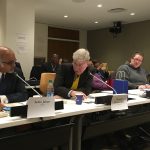
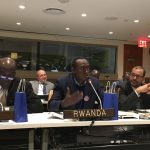
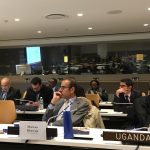
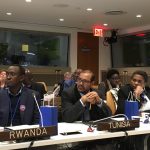
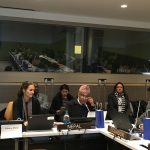
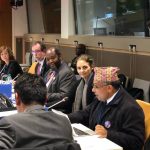
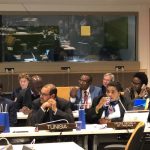
Recent Comments